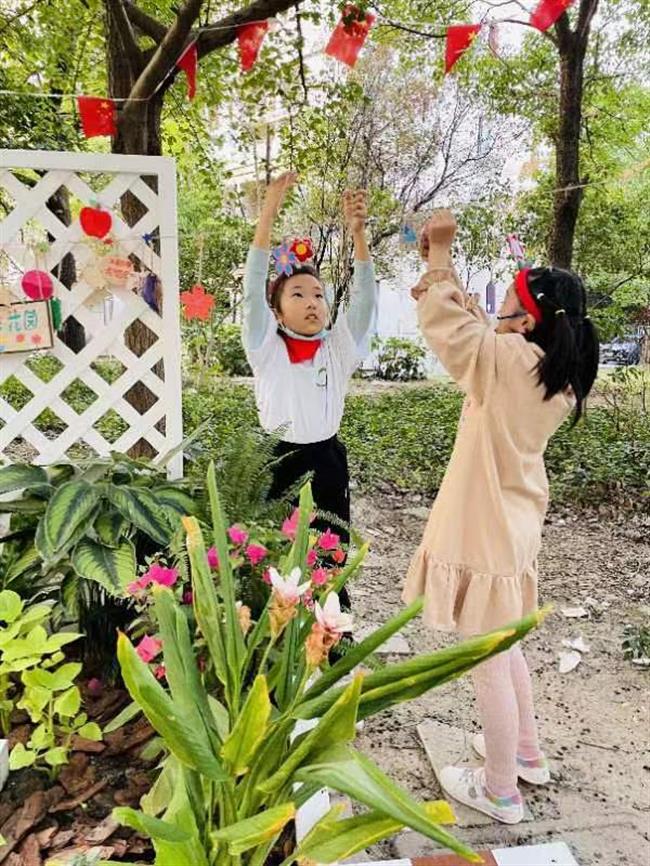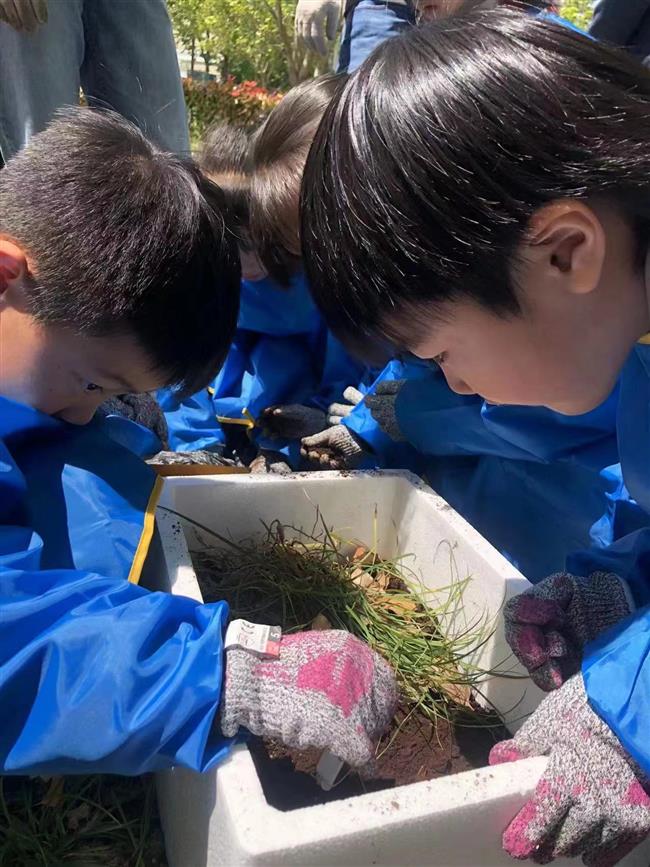Coaxing kids outdoors by dangling an elfish leaf before them
As part of events in Zhongshan Park to mark Children's Day on June 1, the "I Wonder Why" magazine, in collaboration with other entities, launched a study tour themed "In Search of the Leaf-Elf," to guide students in their discovery of nature, in the hope of piquing their interest in science in general.
This is a salutary effort, for in a sense a leaf encapsulates the full range of the questions, "where did we come from, where are we, and where are we going to?".
We are powered by energy that comes from photosynthesis, whereby green leaves capture energy from the sun. We exploit the energy when we eat the plants, or the animals that eat them.
Our ruthless exploitation of fossil fuels – energy first captured by leaves and then stored in soil or rocks – is warming the planet at a rate that, if unchecked, will tip the balance, with disastrous consequences.

In the Jinju community in Dongming neighborhood in Pudong, children help with decorations in the garden, in an event handled by themselves.
We are not usually mindful of the humble leaves that feed us.
I was recently shown around a school campus, and during the tour managed to identify some loquat trees. This is an indigenous species whose English name has been derived from lokwat, the Cantonese for orange (which also originated in China). Its big leaves are easily identifiable, though I drew quite some admiration from others accompanying me by doing so. When I went on to identify pomegranates, poplars, and some vegetables, I was regarded as a consummate botanist.
If it were not for the time constraints, I was really yearning to say something about potatoes, whose plants bloom with beautiful flowers.
The potato was originally domesticated by Native Americans in multiple locations of what is present-day Peru and Bolivia, about 7,000–10,000 years ago, long before the continent was "discovered" by Europeans. Why was its domestication so important? Well, it was toxic before that.

A child in the Wanliuyu community in Dongming Neighborhood in Pudong helps grow plants in the neighborhood garden.
Also toxic are its fruits, today.
In the "I wonder Why" event the classical question was asked: Is a potato fruit? Of course it is a tuber. Its fruits (born of flowers) are like infant tomatoes, green, and toxic.
When potatoes were first brought to the West by the Spaniards, it was regarded as an ornamental plant for its beautiful flowers. When it became a food, it contributed to population growth, and the failure of the crop during 1845-1850 led to an epic famine, reducing the Irish population by a quarter. Potatoes were also used to explain Chinese population growth during the Qing Dynasty (1644-1911).
It was a thankless contribution from the Native Americans who were decimated in their subsequent contacts with colonists by disease, or extermination.
Being inherently an agrarian society, we Chinese have developed a strong eating regiment in sync with the seasons. During spring time, for instance, people in this part would be expecting chuncai, or spring vegetables, that consist of, among others, malantou (Indian kalimeris herb), gouji tou (lycium Chinese sprouts), candou (horse beans, or broad beans), or xiangchun, the young leaves from the Chinese toon (Toona siensis), otherwise just a tree.

Kindergarten children plant medicinal herbs in the Dongming community in Sanlin in Pudong, under instruction from Jumingxin, a social group engaged in reinvigorating urban neighborhoods.
Locals have become so fastidious about the tenderness of these delicacies that those picked in the nick of time can be several times pricier than those harvested in or past their prime. This is particularly true in the case of horse beans.
Apparently, in tasting such delicacies, the educational message is "seize the moment." Ostensibly, plant growth is a deceptively slow process, and you miss the seasonal pace at your own peril.
As a reminder, our ancestors divided the year into 24 solar terms, with the latest being mangzhong, Grain in Ear, which fell this year on June 6. It marks the end of the grain-growing season with a warning: It is the last chance for sowing. The days after Grain in Ear consists of three periods of waiting: for mantis to break through their shells, for the shrikes to sing on the tree, and for mocking birds to stop singing.
When I think about it, I cannot but marvel at the versatility of our ancestors. Take the reeds. Its sprouts, luya, are a delicacy, its leaves can be used to make zongzi (a pyramid shaped dumpling made of glutinous rice eaten at Dragon Boat Festival, which falls on June 22 this year), and the way you make zongzi will reveal where you are from. Its stems, after being processed, can be used to make mats. The outer sheaths of the stem can be used as fuel for cooking. When burned, it gives off a sweet smell, which always brings me back to a village in north Jiangsu where I stayed for a couple of years in my childhood. The reed-human tale goes deeper: I have recently learnt that lugen, the reed rhizome, can be cooked as an ingredient for a healthy drink.
The leaves will do us a great favor if only kids could be coaxed into the great outdoors.
Children above a certain age are rarely seen outdoors these days, at least in large cities.















